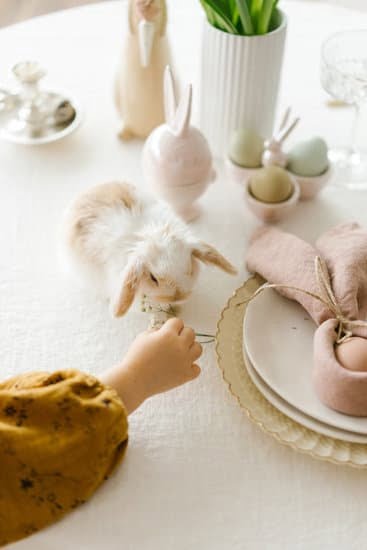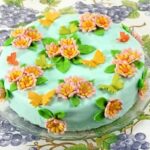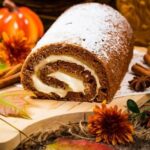Are you looking to elevate the presentation of your homemade cakes? Learning how to decorate icing cake is a skill that can take your baking game to new heights. From creating smooth, flawless surfaces to mastering intricate designs, decorating icing cakes opens up a world of creative possibilities. In this guide, we will explore the essential techniques, tools, and tips for achieving beautifully decorated icing cakes that are sure to impress any crowd.
When it comes to decorating icing cakes, the first step is choosing the right type of icing. Whether you prefer buttercream, fondant, or royal icing, each type has its unique properties and applications when it comes to decorating. Understanding the characteristics of each will help you achieve the desired result for your cake design.
As we delve deeper into this guide, you’ll learn about the essential tools needed for decorating icing cakes. From offset spatulas to piping bags and tips, having the right equipment is crucial for achieving professional-looking results.
We will also provide a step-by-step guide on how to create a smooth icing surface and explore different decorating techniques such as piping and fondant. Lastly, we’ll cover troubleshooting common issues that may arise during the decorating process and offer final tips for perfectly decorated icing cakes.
Choosing the Right Icing for Your Cake
When it comes to decorating icing cakes, choosing the right type of icing is crucial. The type of icing you use can greatly affect the overall look and taste of your cake. There are several different types of icing to choose from, each with its own unique characteristics and uses.
Buttercream
Buttercream is a popular choice for icing cakes due to its creamy texture and sweet flavor. It is versatile and easy to work with, making it ideal for both simple and intricate designs. Buttercream can be easily colored and flavored, allowing for endless possibilities when it comes to decorating.
Fondant
Fondant is another popular choice for cake decorating, especially for more elaborate designs. It provides a smooth and flawless finish and can be rolled out to create intricate decorations such as flowers, ribbons, and other detailed designs. While fondant may not be as tasty as buttercream to some people, it offers a clean canvas for creativity in cake decoration.
Royal Icing
Royal icing is a hard-drying icing that is perfect for creating delicate decorations such as lacework, flowers, and intricate patterns on cakes. It sets firmly, making it ideal for creating 3D designs that stand up on top of the cake. While royal icing may not be as easy to work with as buttercream or fondant, it offers a unique look that cannot be achieved with other types of icing.
When choosing the right icing for your cake, consider the design you have in mind, the flavor preferences of your guests, and your own skill level in working with different types of icings. Ultimately, the right choice will depend on how you want to decorate your cake. Regardless of your selection, each type has its own tips and tricks when applying them on cakes.
Essential Tools for Decorating Icing Cakes
When it comes to decorating icing cakes, having the right tools can make all the difference in achieving a professional and polished look. From smoothing out the icing to creating intricate designs, there are a few essential tools that every cake decorator should have in their arsenal.
Offset Spatula
One of the most essential tools for decorating icing cakes is an offset spatula. This tool is perfect for spreading frosting evenly across the surface of the cake and for creating smooth edges. The angled blade allows for precise control and helps to prevent crumbs from getting into the icing.
Piping Bags and Tips
Piping bags and tips are indispensable for creating decorative designs with icing. Whether you’re looking to create intricate flower decorations or write a personalized message on your cake, piping bags and tips allow for ultimate creativity and precision.
Bench Scraper
A bench scraper is another must-have tool for decorating icing cakes. This tool is perfect for smoothing out the sides of the cake and achieving a clean finish. It can also be used to create texture or patterns on the surface of the icing.
Having these essential tools on hand will make the process of decorating icing cakes much more manageable, allowing you to achieve professional-looking results right in your own kitchen. Now that you have these tools at your disposal, let’s move on to how to use them in our step-by-step guide on how to decorate an icing cake.
Step-by-Step Guide on How to Create a Smooth Icing Surface
Decorating a cake with smooth icing is essential for achieving a professional and polished look. To create a smooth icing surface, you will need the right tools and techniques. Here’s a step-by-step guide on how to achieve this:
- Start by covering your cake with a thin layer of icing, also known as a crumb coat, to seal in the crumbs. Once the crumb coat is applied, refrigerate the cake for about 15-20 minutes to allow the icing to set.
- After the crumb coat has set, apply a thicker layer of icing to completely cover the cake. Use an offset spatula to spread the icing evenly across the top and sides of the cake. It’s important to work quickly and efficiently to prevent the icing from drying out.
- To achieve a smooth surface, use a bench scraper or icing smoother tool to gently run along the sides of the cake, removing any excess icing and creating a straight edge. Use long, smooth strokes for best results.
When it comes to creating a smooth icing surface on your cake, practice makes perfect. Don’t be afraid to experiment with different techniques and find what works best for you and your decorating style. With time and patience, you’ll be able to create beautifully smooth and professional-looking cakes that are sure to impress any crowd.
Different Decorating Techniques for Icing Cakes (Piping, Fondant, Etc)
Decorating a cake with icing opens up a world of possibilities to let your creativity shine. One of the most important aspects of decorating icing cakes is mastering different techniques, such as piping and fondant work, to achieve stunning designs that will delight both the eyes and the taste buds. In this section, we will explore the various decorating techniques for icing cakes and provide tips on how to achieve professional-looking results.
Piping is a classic and versatile technique for decorating icing cakes. With the use of a piping bag and different tips, you can create intricate designs, borders, flowers, and even lettering on your cake.
To master piping, it is essential to practice consistent pressure control and steady hand movements. Different tips can be used to achieve specific effects, such as star tips for creating rosettes or shell borders, round tips for writing or creating outlines, and petal tips for producing realistic flower petals.
Fondant is another popular technique for decorating icing cakes because it allows for smooth surfaces and intricate details. Fondant can be rolled out into thin sheets and used to cover the entire cake or cut into shapes to create decorations like ribbons, bows, or figurines. It is essential to work with fondant on a clean surface using powdered sugar or cornstarch to prevent sticking. Additionally, smoothing tools are helpful in achieving a flawless finish when working with fondant.
In summary, mastering different decorating techniques for icing cakes such as piping and fondant work requires patience, practice, and attention to detail. Each technique offers unique opportunities to unleash your creativity onto your cakes. Whether you choose piping or fondant (or both.), remember that practice makes perfect when it comes to creating beautifully decorated icing cakes.
Tips and Tricks for Creating Intricate Designs on Icing Cakes
Creating intricate designs on icing cakes can seem like a daunting task, but with the right techniques and tips, it can be an enjoyable and rewarding experience. Here are some tips and tricks to help you achieve professional-looking designs on your icing cakes:
- Use the right tools: Investing in quality piping bags, tips, and tools can make a world of difference when it comes to creating intricate designs. Look for fine-tipped piping tips and sturdy piping bags that will give you better control over your design.
- Practice consistency: Consistency in the texture of your icing is crucial for creating intricate designs. Make sure your icing is the right consistency for the specific design you want to create. Royal icing is great for intricate lace-like designs, while buttercream works well for delicate swirls and flowers.
- Plan your design: Before you start decorating, it’s helpful to sketch or visualize the design you want to create on your cake. This will help you stay organized and avoid mistakes as you work on your cake.
These are just a few tips and tricks to keep in mind when creating intricate designs on icing cakes. With practice and patience, you’ll soon be able to impress friends and family with beautifully decorated cakes.
Remember, decorating icing cakes should be a fun and creative process. Don’t be afraid to experiment with different techniques and decorations to find what works best for you. With these tips in mind, you’ll be well on your way to creating stunning, professional-looking designs on your icing cakes.
How to Use Edible Decorations for Icing Cakes
Decorating a cake with edible decorations is a fun and creative way to add extra pizzazz to your icing cake. Whether you’re celebrating a birthday, wedding, or any special occasion, using edible decorations can take your cake to the next level. Here are some tips on how to use edible decorations for icing cakes:
- Choose the right decorations: When it comes to edible decorations for icing cakes, there are numerous options to choose from. From colorful sprinkles and edible glitter to chocolate shavings and fondant flowers, the possibilities are endless. Consider the theme of your event or the recipient’s preferences when selecting your edible decorations.
- Placement is key: Before you start adding edible decorations to your icing cake, it’s important to have a plan in mind. Think about where you want to place each decoration and how you want them to complement the overall design of the cake. For example, if you’re creating a floral arrangement with fondant flowers, consider placing them strategically around the cake for a balanced look.
- Get creative with textures and shapes: Edible decorations come in various textures and shapes, so don’t be afraid to get creative with their placement. Mix and match different types of decorations to create visual interest and depth on your icing cake. For example, combine smooth chocolate shavings with crunchy sprinkles for an eye-catching contrast.
Using edible decorations for icing cakes is a great way to showcase your creativity and personalize your baked creations. Whether you’re a novice baker or an experienced pro, experimenting with different types of edible decorations can elevate the look of your icing cakes and impress your guests. With these tips in mind, you can confidently decorate your next cake with beautiful and delicious edible adornments.
Troubleshooting Common Issues When Decorating Icing Cakes
When decorating icing cakes, it is common to encounter issues that may affect the final result of your cake. One common issue is air bubbles in the icing. These air bubbles can create an uneven surface and ruin the smooth finish of your cake.
To avoid this problem, make sure to gently tap the iced cake on a flat surface to release any trapped air. Additionally, using a thin layer of icing as a base before applying the final layer can help prevent air bubbles from forming.
Another common issue when decorating icing cakes is frosting that is too runny or too stiff. If your frosting is too runny, add more powdered sugar until you reach the desired consistency. On the other hand, if your frosting is too stiff, try adding a small amount of milk or water to loosen it up. It’s important to achieve the right consistency for your frosting to make sure it spreads easily and holds its shape when decorating.
Additionally, color bleeding can be a problem when using different colored icings on a cake. To prevent this issue, make sure to let each color set before applying another one on top. You can also use gel food coloring instead of liquid food coloring as it tends to bleed less and produce more vibrant colors.
Finally, another common issue is bulging or sagging fondant on a cake. This usually happens when there’s excess moisture between the cake and fondant. To avoid this, make sure that your cake is completely cooled before covering it with fondant, and consider using a thin layer of buttercream or ganache as a base to create a barrier between the cake and fondant.
| Common Issue | Troubleshooting Tips |
|---|---|
| Air bubbles in icing | Gently tap iced cake on flat surface; use thin layer of icing as base |
| Runny or stiff frosting | Add powdered sugar for runny frosting; add milk or water for stiff frosting |
| Color bleeding | Let each color set before applying another one; use gel food coloring instead of liquid |
| Bulging or sagging fondant | Completely cool cake before covering with fondant; use thin layer of buttercream or ganache as base |
Conclusion and Final Tips for Perfectly Decorated Icing Cakes
In conclusion, decorating icing cakes can be a fun and rewarding creative endeavor. By choosing the right icing, using essential tools, and following a step-by-step guide for creating a smooth surface, anyone can master the art of cake decoration. Whether you prefer traditional piping techniques or working with fondant, there are countless ways to express your personal style and creativity through cake design.
In addition to the various decorating techniques mentioned in this article, there are also plenty of tips and tricks for creating intricate designs on icing cakes. From using stencils to experimenting with different color combinations, there is no limit to the possibilities when it comes to cake decoration. And let’s not forget about the use of edible decorations, such as fresh flowers or edible glitter, which can elevate the look of any cake.
Lastly, it’s important to note that troubleshooting common issues when decorating icing cakes is all part of the learning process. Whether it’s dealing with air bubbles in your icing or achieving the perfect consistency for piping, practice makes perfect. With patience and perseverance, anyone can become proficient in how to decorate icing cakes and create stunning masterpieces that taste as good as they look.
Frequently Asked Questions
How Do You Make Icing Look Pretty on a Cake?
To make icing look pretty on a cake, you can use piping techniques to create decorative patterns or designs. Another option is to use a spatula or offset spatula to create textured swirls or peaks in the icing. Adding edible flowers, sprinkles, or colored sugar can also enhance the visual appeal of the icing on a cake.
What Do You Use to Decorate a Cake With Icing?
When decorating a cake with icing, you can use various tools such as piping bags and tips to pipe intricate designs or borders onto the cake. Offset spatulas are ideal for spreading and smoothing out icing. Edible decorations like fondant, edible pearls, or candy can also be used to add visual interest to a cake.
How to Easily Decorate a Cake?
An easy way to decorate a cake is by using stencils to create intricate patterns with powdered sugar or cocoa. Another simple technique is to place fresh fruit, such as berries or sliced kiwi, on top of the cake for a natural and colorful decoration.
Using cookie cutters to create shapes out of fondant or gum paste is also an effortless way to decorate a cake.

Welcome to our cake decorating blog! My name is Destiny Flores, and I am the proud owner of a cake decorating business named Cake Karma. Our mission is to provide delicious, beautiful cakes for all occasions. We specialize in creating custom cakes that are tailored specifically to each customer’s individual needs and tastes.





